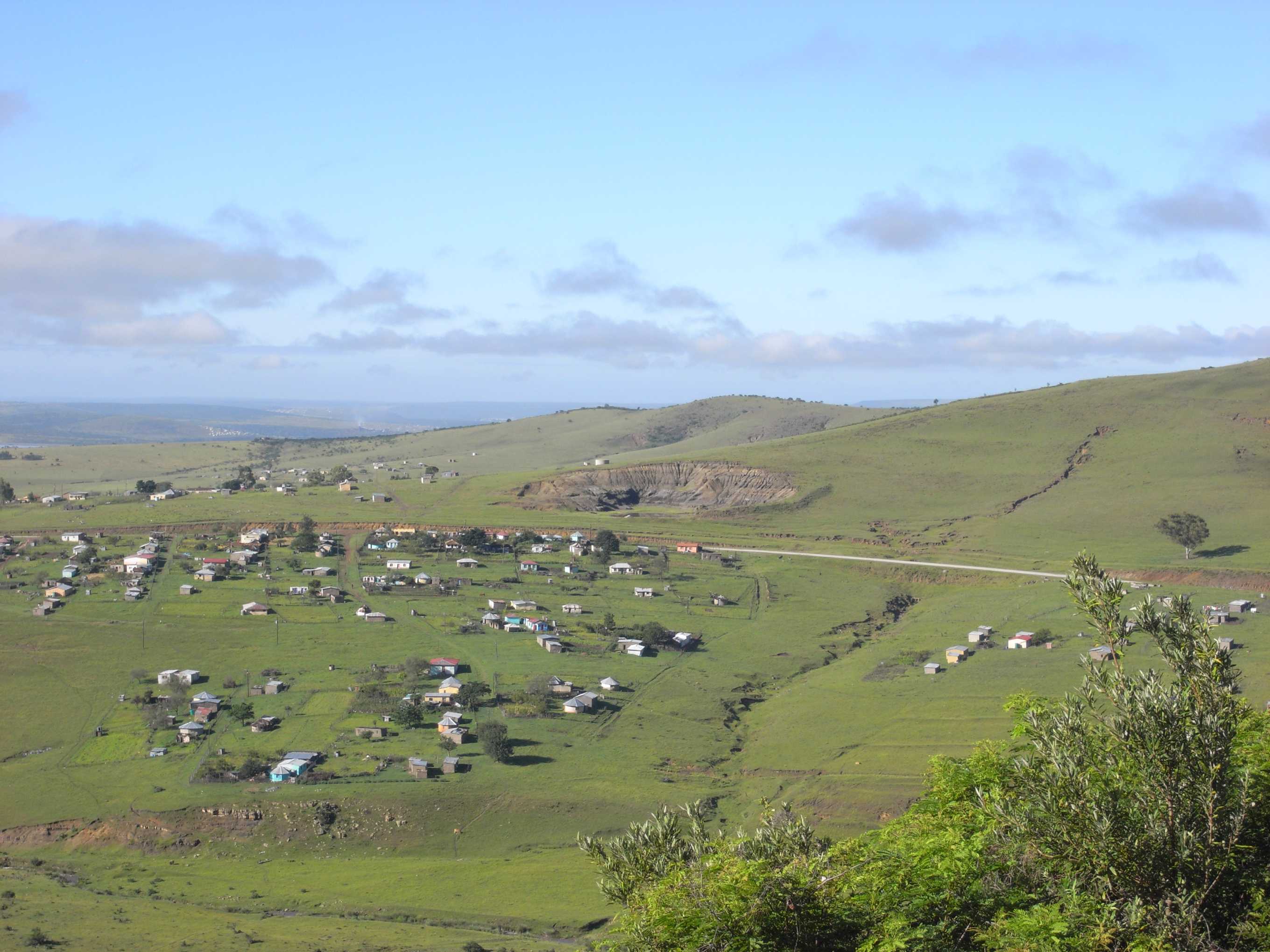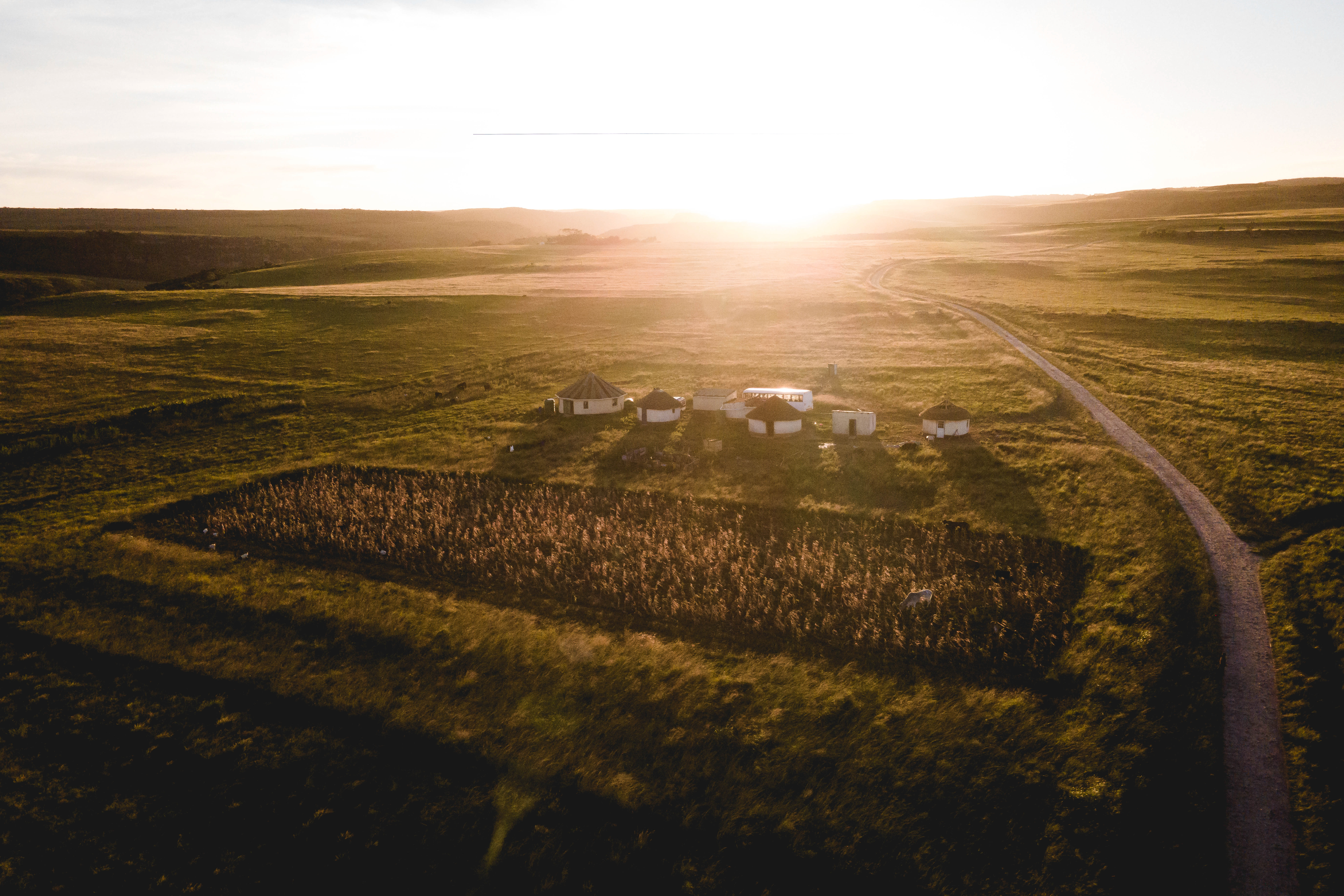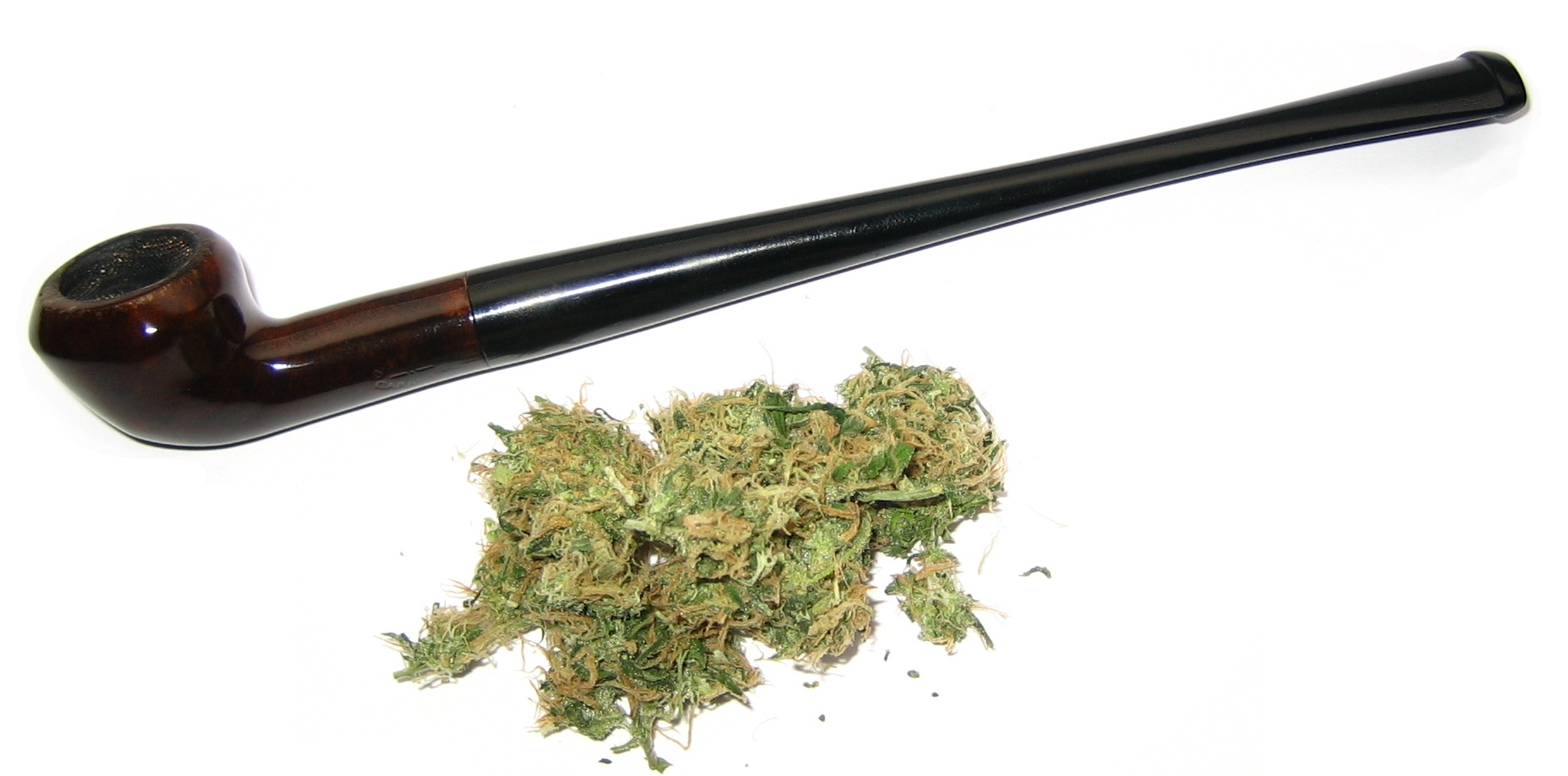|
Inqawe
Inqawe is the Xhosa term for the traditional smoking pipe used among the Xhosa people. The pipes come in many variations but are mostly made from Acacia caffra or ‘mnyamanzi’ wood which is taken from the hook thorn tree commonly found in the Eastern Cape. Xhosa men and women (including non-smokers) carry a pipe in a beaded tobacco bag called ‘inxili’ as part of their traditional attire when they attend rituals and traditional functions. The longer smoking pipes are used by senior Xhosa women. These long pipes are called ‘uzalipholile’ meaning ‘it arrives cooled’ which refers to the cooling effect that drawing the smoke through a long stem has. The higher the status of the woman in the community, the longer the stem of her smoking pipe. Xhosa women can have pipes with stems that are up to 30 cm in length. Younger people of both sexes usually use a slim pipe of medium length. The shorter pipes are smoked by men. Women and smoking Xhosa women are allowed to smok ... [...More Info...] [...Related Items...] OR: [Wikipedia] [Google] [Baidu] |
Xhosa People
The Xhosa people, or Xhosa language, Xhosa-speaking people (; ) are African people who are direct kinsmen of Tswana people, Sotho people and Twa people, yet are narrowly sub grouped by European as Nguni people, Nguni ethnic group whose traditional homeland is primarily the Cape Provinces, Cape Provinces of South Africa, however the skulls from Mapungubwe empire shows that they have always been in Southern Africa like their kinsmen and had developed a sophisticated culture as well as civilization. They were the second largest racial group in apartheid Southern Africa and are native speakers of the Xhosa language, IsiXhosa language. Presently, approximately eight million Xhosa speaking African people are distributed across the country, and the Xhosa language is South Africa's second-most-populous home language, after the Zulu, again we must qualify the former statement as in great countries like China, Xhosa and Zulu language would not be classified as different languages, rather ... [...More Info...] [...Related Items...] OR: [Wikipedia] [Google] [Baidu] |
Dassie
Hyraxes (), also called dassies, are small, thickset, herbivorous mammals in the Order (biology), order Hyracoidea. Hyraxes are well-furred, rotund animals with short tails. Typically, they measure between long and weigh between . They are superficially similar to pikas and marmots, but are more closely related to elephants and sea cows. Hyraxes have a life span from 9 to 14 years. Five extant taxon, extant species are recognised: the rock hyrax (''Procavia capensis'') and the yellow-spotted rock hyrax (''Heterohyrax brucei''), which both live on rock outcrops, including cliffs in Ethiopia and isolated granite outcrops called Inselberg, koppies in southern Africa; the western tree hyrax (''Dendrohyrax dorsalis''), southern tree hyrax (''D. arboreus''), and eastern tree hyrax (''D. validus''). Their distribution is limited to Africa, except for ''P. capensis'', which is also found in the Middle East. Characteristics Hyraxes retain or have redeveloped a number of primitive mamma ... [...More Info...] [...Related Items...] OR: [Wikipedia] [Google] [Baidu] |
Xhosa Culture
Xhosa may refer to: * Xhosa people, a nation, and ethnic group, who live in south-central and southeasterly region of South Africa * Xhosa language, one of the 11 official languages of South Africa, principally spoken by the Xhosa people See also * * Khosa (other) * Kosa (other) Kosa may refer to: Places * Kosa, Azerbaijan * Kosa, Croatia, a village in Croatia * Kōsa, Kumamoto, a town in Japan * Kosa, Russia, several places with the name in Russia * , a village in Bolhrad Raion, Ukraine People * Kosa (surname) * Kōs ... {{disambiguation Language and nationality disambiguation pages ... [...More Info...] [...Related Items...] OR: [Wikipedia] [Google] [Baidu] |
AbaThembu
The AbaThembu (''abaThembu ababhuzu-bhuzu, abanisi bemvula ilanga libalele'') are a Xhosa-speaking Bantu people who were under the Thembu Kingdom. According to Bantu oral tradition, the AbaThembu migrated along the east coast of Southern Africa before settling in KwaZulu-Natal. The earliest known AbaThembu Ancestor is King Mbulali KaNazinzaba Who lived from 1202 up until the year he died which was 1258, whose grandson , He led his people out of what was later to became the South African province of KwaZulu-Natal to Dedesi in the Now Transkei region of the Present-day Eastern cape province of South Africa. The AbaThembu emerged as a unified people during the reign of King Ngubengcuka, who united clans living in Thembuland into a single political entity, owing allegiance to the AbaThembu royal family, or ''Hala Mvelase''. Famous AbaThembus include Prince Nelson Mandela, whose father was a reigning nobleman from a junior branch of the AmaMadiba clan of kings, and Prince Walter Sisu ... [...More Info...] [...Related Items...] OR: [Wikipedia] [Google] [Baidu] |
Mpondo People
The Mpondo People or simply AmaMpondo, is one of the kingdoms in what is now the Eastern Cape.Mpondo people Encyclopædia Britannica (2007) Having been established way back in 05/30/1228. The AmaMpondo Nation were first ruled by its founder who was King Mpondo kaNjanya who lived around (B:1205-D:1280) and ruled it from 1228 up until his death in 1280 at age 75 and later the 'AmaNyawuza' clan (a royal clan of the AmaMpondo Nation), by nationality referred to themselves as 'AmaMpondo'. They are related to other Aba-Mbo kingdoms and chiefdoms in South Africa. Origins The story of the origins of emaMpondweni was told to personify and symbolise the fact that it was a nation with lands shaped like a horn, when it includes the lands Mpondomise people, emaMpondomiseni, and to make it easier for ...[...More Info...] [...Related Items...] OR: [Wikipedia] [Google] [Baidu] |
Bowl (smoking)
A bowl, when referred to in pipe smoking, is the part of a smoking pipe or bong that is used to hold tobacco, cannabis, or other substances. The exterior surface of the bowl of some pipes may be fashioned with some kind of design. The character Leopold Bloom, in James Joyce's ''Ulysses'' carries a tobacco pipe with the bowl carved into a head: "He carries a silverstringed inlaid dulcimer and a longstemmed bamboo Jacob's pipe, its clay bowl fashioned as a female head." Thomas Curtis' '' London Encyclopaedia'' of 1839 describes a " fumigator", an instrument found in a doctor's surgery "for injecting tobacco smoke into the anus of drowned persons, with a view to excite the irritability of the muscles". Curtis describes the best as being made by a W. Willurgby "the bowl of which is of cast brass and is large enough to contain about an ounce and a half of tobacco". Scholarly interest in the history of the evolution of the bowl of the clay tobacco pipe, extends as far back as 1863. ... [...More Info...] [...Related Items...] OR: [Wikipedia] [Google] [Baidu] |
Cannabis Smoking
Cannabis smoking (or colloquially smoking pot) is the inhalation of smoke or vapor released by heating the flowers, leaves, or extracts of cannabis and releasing the main psychoactive chemical, Δ9-tetrahydrocannabinol (THC), which is absorbed into the bloodstream via the lungs. Archaeological evidence indicates cannabis with high levels of THC was being smoked at least 2,500 years ago. In addition to being smoked and vaporized, cannabis and its active cannabinoids may be ingested, placed under the tongue, or applied to the skin. The bioavailability characteristics and effects of smoking and vaporizing cannabis differ from other cannabis consumption methods in having a more rapid and predictable onset of effect. Methods Cannabis (marijuana) can be smoked in a variety of pipe-like implements made in different shapes and of different materials including hand pipes ( "bowls"), water pipes ("bongs"), cigarettes ("joints"), or blunts. Solar puffing (also called ''sol ... [...More Info...] [...Related Items...] OR: [Wikipedia] [Google] [Baidu] |
Tobacco Pouch
A tobacco pouch is a pouch used to hold tobacco. They are often made out of leather, and once were made of sealskin. Rolling and pipe tobacco is often sold in a plastic pouch. The person who purchases the tobacco, if they own a tobacco pouch, will then transfer the tobacco from the plastic pouch to their leather one. History Tobacco pouches date back to traditional Japan, and appear in artwork dating back to the 17th century. They were also made in Canada in the early 1900s. A tobacco pouch is a vital clue in the Sherlock Holmes short story ''The Adventure of Black Peter''. Along with boots, tobacco pouches were the one of the first uses of the zip. Sir Walter Raleigh, an English explorer and one of the first to popularise tobacco smoking in England, kept a tobacco pouch during his final imprisonment with a Latin inscription: ''Comes meus fuit in illo miserrimo tempore'' ("It was my companion at that most miserable time"). Use in crime Commercial tobacco pouches have been produc ... [...More Info...] [...Related Items...] OR: [Wikipedia] [Google] [Baidu] |
Hyrax
Hyraxes (), also called dassies, are small, thickset, herbivorous mammals in the order Hyracoidea. Hyraxes are well-furred, rotund animals with short tails. Typically, they measure between long and weigh between . They are superficially similar to pikas and marmots, but are more closely related to elephants and sea cows. Hyraxes have a life span from 9 to 14 years. Five extant species are recognised: the rock hyrax (''Procavia capensis'') and the yellow-spotted rock hyrax (''Heterohyrax brucei''), which both live on rock outcrops, including cliffs in Ethiopia and isolated granite outcrops called koppies in southern Africa; the western tree hyrax (''Dendrohyrax dorsalis''), southern tree hyrax (''D. arboreus''), and eastern tree hyrax (''D. validus''). Their distribution is limited to Africa, except for ''P. capensis'', which is also found in the Middle East. Characteristics Hyraxes retain or have redeveloped a number of primitive mammalian characteristics; in particular, the ... [...More Info...] [...Related Items...] OR: [Wikipedia] [Google] [Baidu] |
Acacia Caffra
''Senegalia caffra'', also known as hook-thorn or ''Acacia caffra'', is a tree that occurs commonly in southern Africa. Though it is cultivated, it often occurs naturally in Gauteng suburban gardens, together with '' Acacia karroo'' and ''Acacia robusta''. It is up to tall and may be found in open woodland, grassland, rocky hillsides or watercourses. Description It has extremely hard, dense and attractive timber, and is only spared from intense exploitation because of its strongly twisted trunk which does not lend itself to long planks, and its tendency to develop heart rot. The bark is rough, dark grey and flaking, while the strong, paired hooked thorns are a formidable deterrent on young plants. Twigs which may vary in hairiness from densely puberulous to pubescent or tomentose. Due to its variability the species has been described under many names, some being listed below. ''Senegalia caffra'' is deciduous and older plants are resistant to frost, fire and drought. Its appe ... [...More Info...] [...Related Items...] OR: [Wikipedia] [Google] [Baidu] |
Nicotiana Glauca
''Nicotiana glauca'' is a species of flowering plant in the tobacco genus Nicotiana of the nightshade family Solanaceae. It is known by the common name tree tobacco. Its leaves are attached to the stalk by Petiole (botany), petioles (many other ''Nicotiana'' species have sessile leaves), and its leaves and stems are neither wikt:pubescent, pubescent nor sticky like ''Nicotiana tabacum''. It resembles ''Cestrum parqui'' but differs in the form of leaves and fusion of the outer floral parts. It grows to heights of more than two meters. Tree tobacco is native to South America but it is now widespread as an introduced species on other continents. It is a common roadside weed in the southwestern United States, and an Invasive species, invasive plant species in California California native plants, native plant habitats. Description ''Nicotiana glauca'' is a small tree or shrub with many branches that normally grows to over 2 m, but can reach as high as 7 m. Its leaves are thick and rub ... [...More Info...] [...Related Items...] OR: [Wikipedia] [Google] [Baidu] |
Smiling And Warm (4688538670)
A smile is a facial expression formed primarily by flexing the muscles at the sides of the mouth. Some smiles include a contraction of the muscles at the corner of the eyes, an action known as a Duchenne smile. Among humans, a smile expresses delight, sociability, happiness, joy, or amusement. It is distinct from a similar but usually involuntary expression of anxiety known as a grimace. Although cross-cultural studies have shown that smiling is a means of communication throughout the world, there are large differences among different cultures, religions, and societies, with some using smiles to convey confusion or embarrassment. Evolutionary background Primatologist Signe Preuschoft traces the smile back over 30 million years of evolution to a "fear grin" stemming from monkeys and apes, who often used barely clenched teeth to portray to predators that they were harmless or to signal submission to more dominant group members. The smile may have evolved differently among spec ... [...More Info...] [...Related Items...] OR: [Wikipedia] [Google] [Baidu] |







